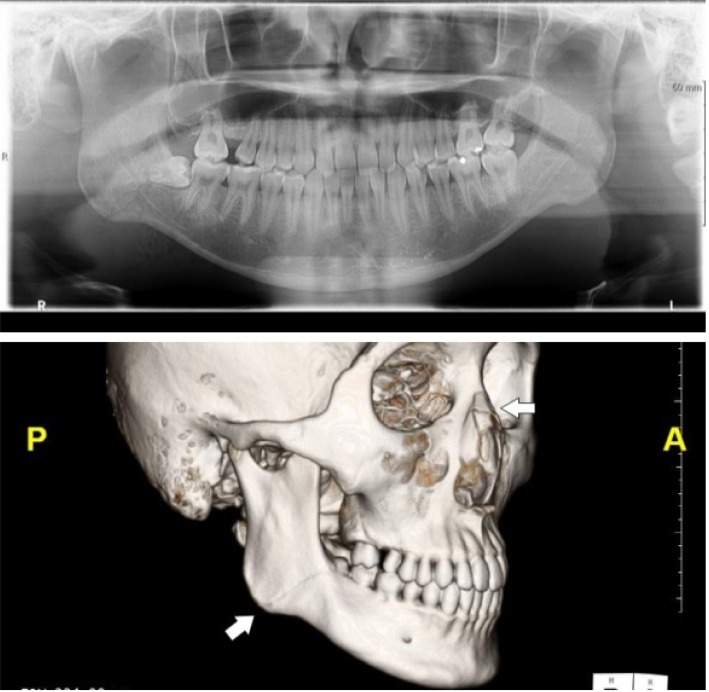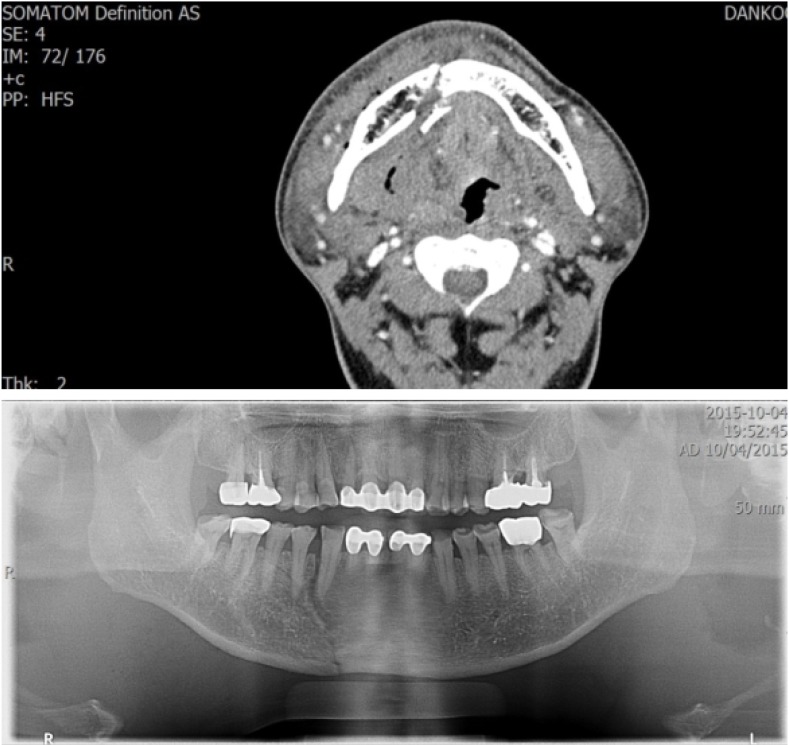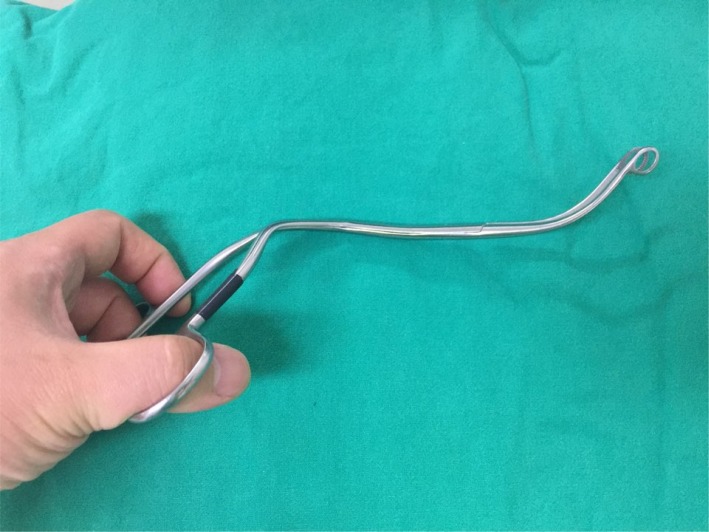J Dent Anesth Pain Med.
2017 Sep;17(3):219-223. 10.17245/jdapm.2017.17.3.219.
Fiberoptic bronchoscope and C-MAC video laryngoscope assisted nasal-oral tube exchange: two case reports
- Affiliations
-
- 1Department of Anesthesiology and Pain Medicine, Dankook University College of Medicine, Cheonan, Korea. drjack@nate.com
- 2Department of Oral and Maxillofacial Surgery, Dankook University College of Dentistry, Cheonan, Korea.
- KMID: 2390807
- DOI: http://doi.org/10.17245/jdapm.2017.17.3.219
Abstract
- In cases of multiple facial trauma and other specific cases, the anesthesiologist may be asked to convert an oral endotracheal tube to a nasal endotracheal tube or vice versa. Conventionally, the patient is simply extubated and the endotracheal tube is re-inserted along either the oral or nasal route. However, the task of airway management can become difficult due to surgical trauma or worsening of the airway condition. Fiberoptic bronchoscopy was considered a novel method of airway conversion but this method is not useful when there are secretions and bleeding in the airway, or if the anesthesiologist is inexperienced in using this device. We report a successful airway conversion under the aid of both, a fiberoptic bronchoscope and a C-MAC video laryngoscope.
MeSH Terms
Figure
Cited by 1 articles
-
Orotracheal intubation in a patient with difficult airway by using fiberoptic nasotracheal intubation: A case report
Hye Joo Yun, Eunsun So, Myong-Hwan Karm, Hyun Jeong Kim, Kwang-Suk Seo
J Dent Anesth Pain Med. 2018;18(2):125-128. doi: 10.17245/jdapm.2018.18.2.125.
Reference
-
1. Nakata Y, Niimi Y. Oral-to-nasal endotracheal tube exchange in patients with bleeding esophageal varices. Anesthesiology. 1995; 83:1380–1381. PMID: 8533944.
Article2. Dutta A, Chari P, Mohan RA, Manhas Y. Oral to nasal endotracheal tube exchange in a difficult airway: a novel method. Anesthesiology. 2002; 97:1324–1325. PMID: 12411827.
Article3. Hoffman J, Matthews JM, Reese AR. Oral endotracheal tube exchange to the nasal route in a patient with facial trauma. J Clin Anesth. 2011; 23:342. PMID: 21524900.
Article4. Muldowney BL, Eastburn EC, Nargozian CD. Oral to nasal endotracheal tube exchange using an airway exchange catheter in a neonate with Pierre Robin Sequence. J Clin Anesth. 2015; 27:80–81. PMID: 25468589.
Article5. Lee SH, Kim JE, Kang JM. Alternative technique for changing from nasal to oral endotracheal tube for orthognathic and nasal surgery by using an airway exchange catheter: a case report. Korean J Anesthesiol. 2014; 67:48–51. PMID: 25097739.
Article6. Sharma D, Kim LJ, Ghodke B. Successful airway management with combined use of Glidescope videolaryngoscope and fiberoptic bronchoscope in a patient with Cowden syndrome. Anesthesiology. 2010; 113:253–255. PMID: 20526181.
Article7. Cooper RM. Complications associated with the use of the GlideScope videolaryngoscope. Can J Anaesth. 2007; 54:54–57. PMID: 17197469.
Article
- Full Text Links
- Actions
-
Cited
- CITED
-
- Close
- Share
- Similar articles
-
- Successful airway management with combined use of McGrath® MAC video laryngoscope and fiberoptic bronchoscope in a severe obese patient with huge goiter: a case report
- Difficult Airway Management with Fiberoptic Bronchoscopy Combined with Video Laryngoscope in a Patient with Ludwig Angina
- Orotracheal intubation in a patient with difficult airway by using fiberoptic nasotracheal intubation: A case report
- Use of the flexible fiberoptic laryngoscope to change endotracheal tube
- Combined use of a McGrath(R) MAC video laryngoscope and Frova Intubating Introducer in a patient with Pierre Robin syndrome: a case report




